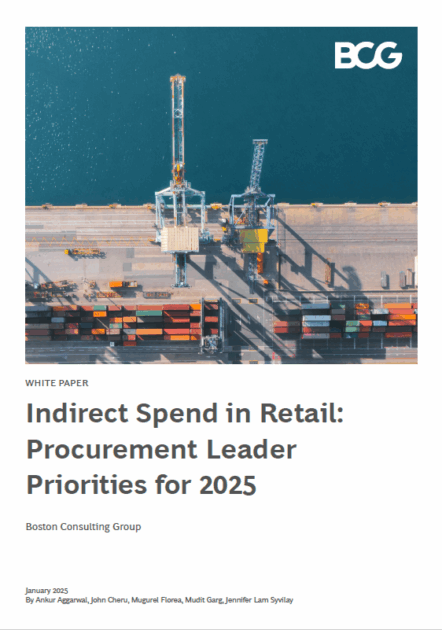The retail industry is at an inflection point. Macroeconomic uncertainty, rising inflation, and supply chain volatility have heightened the need for businesses to optimize costs while strengthening resilience. The latest developments—including Trump’s proposed trade tariffs, which could dramatically increase import costs and disrupt global supply chains—only add to the urgency for CEOs to rethink their approach to cost management and procurement strategy.
In this evolving landscape, indirect spend—often viewed as a secondary priority—has emerged as a critical driver of operational efficiency, risk mitigation, and financial performance. Yet, despite its significance, indirect spend remains one of the least controlled areas of corporate expenditure. Many retailers struggle with fragmented procurement processes, limited spend visibility, and inconsistent policy enforcement. As a result, billions in potential savings, efficiency gains, and strategic value remain untapped.
A recent report on procurement leader priorities in Retail by BCG in North America highlights why CEOs must take an active role in redefining their organizations’ approach to indirect spend. The findings are clear—and they also reflect our experience with clients in Europe: the businesses that take control of their indirect spend today will gain a decisive competitive edge in an increasingly cost-sensitive and disruption-prone market.
Why indirect spend must be a priority

For decades, procurement has been viewed primarily as a cost-cutting function. Today, leading organizations recognize that it is a core enabler of profitability, resilience, and innovation. The CEOs who integrate procurement into their overall corporate strategy stand to unlock significant bottom-line improvements while enhancing agility and long-term sustainability.
The traditional approach to cost management is no longer sufficient. While many organizations focus on direct procurement—the materials and goods directly tied to production—indirect spend accounts for up to 20% of a retailer’s revenue. It includes everything from logistics, IT, and marketing to facilities, professional services, and corporate overhead. When optimized, indirect procurement can drive sustainable cost savings of up to 15% while improving supply chain resilience and risk management.
Persistent inflationary pressures and supply chain disruptions mean that controlling costs without sacrificing operational excellence is a top CEO agenda item. Organizations that rely solely on traditional cost-cutting measures risk short-term gains at the expense of long-term value. The most successful leaders are adopting strategic sourcing, supplier consolidation, and advanced procurement analytics to drive sustainable cost savings that enhance profitability rather than erode capabilities.
Many businesses remain highly dependent on a small set of suppliers, often concentrated in low-cost regions, leaving them vulnerable to geopolitical tensions, regulatory shifts, and logistics bottlenecks. The recent uncertainty surrounding Trump’s proposed trade tariffs, which could lead to higher import costs and further disruption in global supply chains, underscores the urgent need for businesses to rethink their sourcing strategies. CEOs who prioritize supplier diversification, build redundancy into their supply chains, and develop structured risk management frameworks will be better positioned to navigate uncertainty and maintain continuity.
The adoption of automation, AI, and predictive analytics remains one of the most underutilized levers for efficiency and cost control in indirect procurement. While many companies use digital tools for spend tracking, few leverage them to anticipate risks, optimize supplier negotiations, or identify untapped savings opportunities. CEOs who embed digital procurement into their enterprise-wide digital transformation efforts will improve decision-making, enhance agility, and unlock significant operational efficiencies.
From procurement to profit center
For too long, procurement—especially indirect spend—has been relegated to the back office. In today’s economic climate, that is no longer viable. Companies who elevate procurement from a tactical function to a strategic enabler will not only protect their margins but also enhance operational flexibility, resilience, and competitive positioning.
Businesses that fail to proactively manage indirect spend will continue to see inefficiencies drain resources, while those that embrace a data-driven, strategic approach will gain a decisive edge in the market.
Download the full white paper for free:
Fill out the contact form below to receive the complete report by email.





